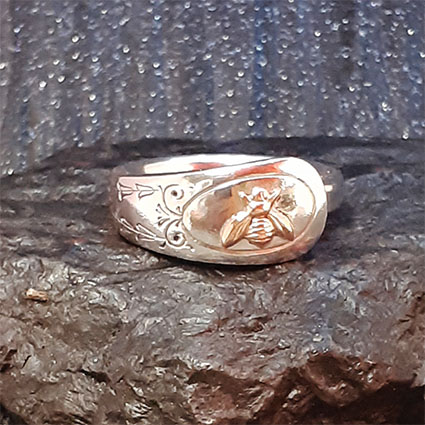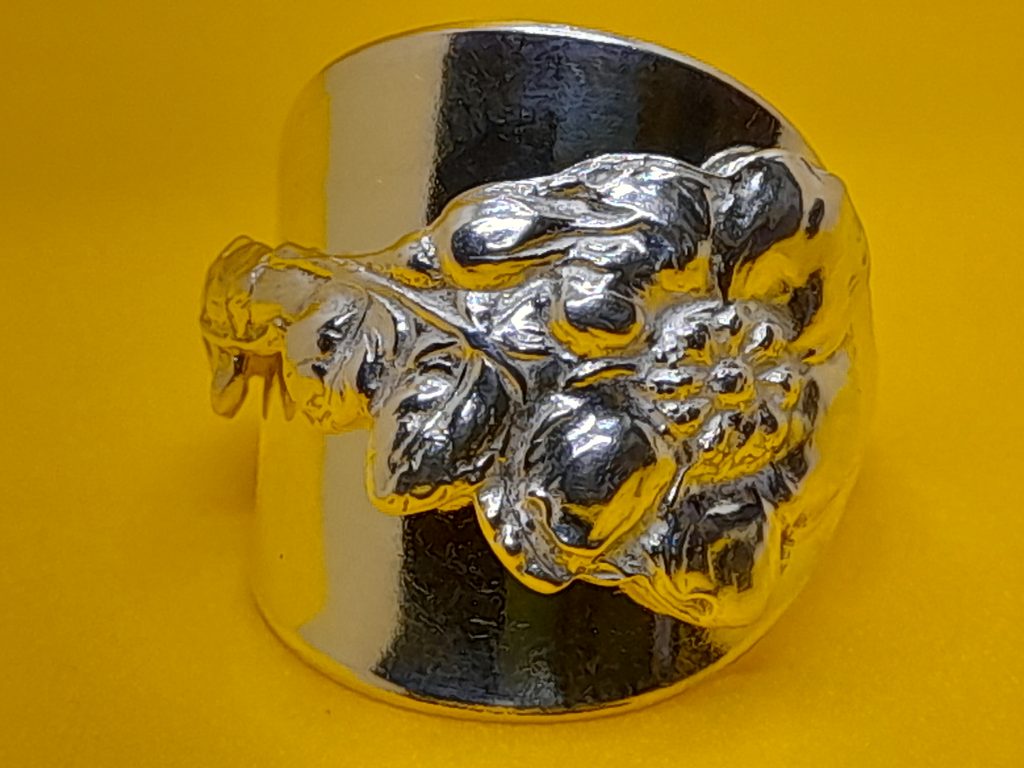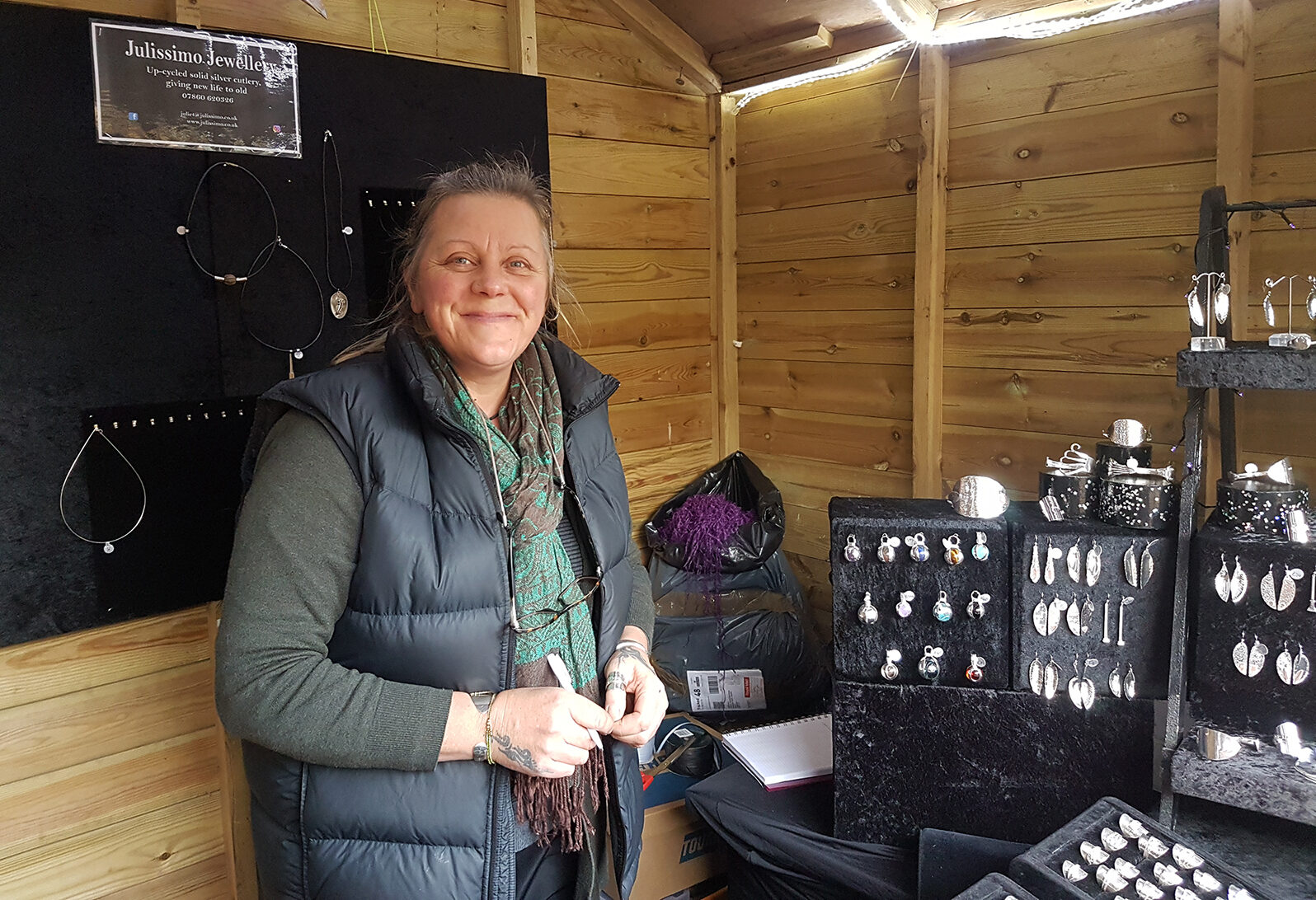
It is said that Spoon rings were first made in 17th century England as wedding rings by servants who could not afford expensive precious metals. All but the poorest households employed servants, who usually lived in, sleeping in attics, kitchens, or basements. Pay was low but include their keep and often their clothing. Servants would steal a silver spoon from their master and have it turned into a wedding ring. Usually rings were made from the metal handles of table cutlery. In those days, solid silver cutlery was highly prized and often displayed the family crest of the wealthy family who commissioned, owned and used the pieces. Thus, the earliest spoon rings served as symbols of love and commitment, in defiance of strict social and economic barriers.
Servants who were caught were sentenced for “stealing a silver spoon”. An expression of love would be punished with a sentence of 7 years imprisonment overseas.

Ever since the 17th century Spoon rings have been a timeless and unique gift, a wonderful piece of heritage not forgotten and now you could own a piece of recycled solid silver cutlery from Julissimo Jewellery that could be between 50 to 200 years old with traditional decoration.
Our spoon rings can be adjusted to be made bigger or smaller than their current size which is detailed in the description of each ring, please do message Juliet@julissimo.co.uk for further information.
Sterling Silver
Sterling silver has durability. Pure silver is very soft, making it a poor choice for an everyday ring, such as an engagement ring or wedding band. The addition of copper makes silver strong. … Sometimes the number “925” is used to specify that a metal is sterling silver and designates a silver alloy at 92.5%. The stamp of “925” by itself is not, strictly speaking, a hallmark, but is rather an unattested fineness mark, generally stamped by the maker.
Continental or European Silver is marked with indicators from 800 to 850 designates a silver alloy at 80%-85%. All Julissimo’s Jewellery is sterling silver.
Hall Marks
In some nations, such as the UK, the hallmark is made up of several elements, including: a mark denoting the type of metal, the maker/sponsor’s mark and the year of the marking. In England, the year of marking commences on 19 May, the feast day of Saint Dunstan, patron saint of gold- and silversmiths.
Manufacturers
Reed & Barton

Reed & Barton is a prominent American silversmith manufacturer, based in the city of Taunton, Massachusetts. They were operating between 1824 and 2015.
The silverware firm actually began in 1824 as Babbit & Crossman. Unfortunately, the firm hit hard times in 1834. That is when two of their craftsmen – Henry G. Reed and Charles E. Barton – stepped in to turn the financial problems around. The company was eventually renamed in 1840 as Reed & Barton. Incidentally, this was the same year electroplating was patented in England. Electroplating was a process that Reed & Barton utilised to its fullest.
In 1928, Reed & Barton merged with another silversmith manufacturing company called Dominick & Haff.
In 1996, Reed & Barton were chosen to design and produce the official medals for the Summer Olympics in Atlanta, there are samples on display in Taunton at the Old Colony History Museum.
The silversmith’s products have even been used in the White House in Washington, D.C.
The company has remained privately owned by the family of Henry Reed. Reed & Barton are not just renowned for the flatware they craft, they operate other brands as well: Reed & Barton Handcrafted Chests, it is the world’s largest manufacturer of handmade chests, pen chests, cigar humidors, and hardwood flatware.
The firm filed for bankruptcy in February 2015, putting an end to their 175-yearlong famous silverware firm.

